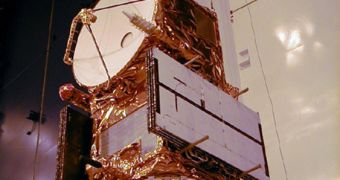The Jason-1 satellite has just turned 10, officials at NASA and the French Space Agency Centre Nationale d'Etudes Spatiales (CNES) announce. The mission was launched on December 7, 2001, to study our planet's oceans from space, and keep an eye on global sea level changes.
As climate change and global warming start to take an increasingly stronger foothold on Earth, their effects too are becoming more obvious, and missions such as this one are developed to monitor them.
Measurements of ocean surface topography are critically-important for determining the influence that the changing atmosphere and the melting of glaciers has on the seas. Small island nations, for example, are at an extreme risk of being wiped off the face of the planet as the ocean level rises.
One of the purposes of the Jason-1 mission was to ensure that warnings about such events were issued with enough time to space so that mitigating measures could be taken. Its mission was originally scheduled to last between 3 and 5 years, but excellent engineering allowed it to remain operational.
It launched to space from the Vandenberg Air Force Base (VAFB), in California, aboard a Delta II delivery system. Primarily, it was meant as a mission to ensure continuity in oceanic data NASA had accumulated via previous satellites.
With its addition to the space agency's Earth-observing satellites, NASA ensured an uninterrupted, 20-year dataset on oceanic circulation patterns, climate change and sea level fluctuations. Jason-1 was developed as a continuation of the NASA/CNES Topex/Poseidon mission.
The Ocean Surface Topography Mission/Jason-2 satellite – which was launched in 2008 – was also a collaboration between the American and French space agencies, together with American and European meteorological agencies.
“Jason-1 extended Topex/Poseidon's record of global sea level rise, one of our most important indicators of climate change, into a second decade,” says Jason-1 project scientist Lee-Lueng Fu, who holds an appointment at the NASA Jet Propulsion Laboratory (JPL), in Pasadena, California.
“The altimeter-observed geographic pattern of long-term sea level change is a landmark discovery of oceanography,” he adds. The JPL manages the US segment of the mission for the NASA Science Mission Directorate, in Washington, DC. JPL is in turn managed by the California Institute of Technology.
“Driven by melting ice and expanding seawater, global sea level rise has become a powerful reminder of how fast humans are changing the climate. Along with its predecessor, Topex/Poseidon, and its successor, Jason-2, Jason-1 has kept a finger on the pulse of global climate change,” Josh Willis adds.
The expert holds an appointment as an oceanographer at JPL, and is also a scientist for the proposed Jason-3 mission. The satellite is now scheduled to launch in 2014.

 14 DAY TRIAL //
14 DAY TRIAL //